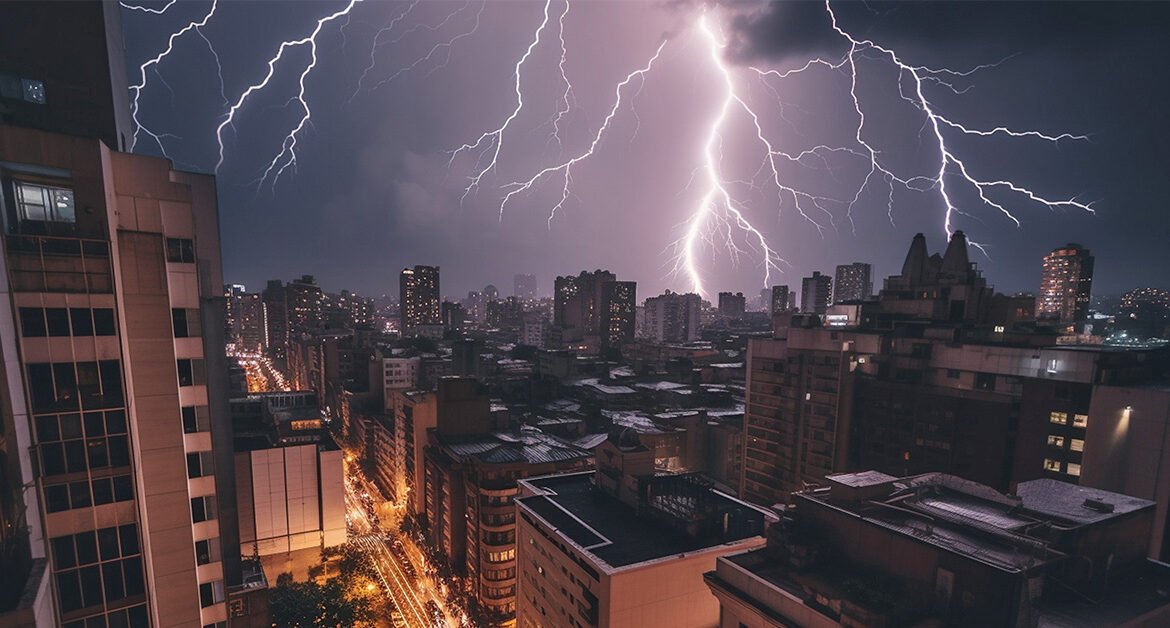It may seem like a bad joke, but it's unbelievable that in Brazil there are still many buildings that don't care about electrical safety and insist on not installing items like a grounding system.
However, according to NBR 5410, it is a mandatory protection item, as it offers a safe path for electrical and atmospheric discharges that may occur at the site to be directed to the ground, in addition to protecting people from electric shocks.
According to IFC/COBRECOM, which is recognized as one of the main manufacturers of electrical wires and cables in the country, if the grounding system is not installed, people using the property will be unprotected against discharges that may occur during the use of their equipment and appliances.
Grounding vs. Protective Conductor
Professor and engineer Hilton Moreno, who is also a Technical Consultant at IFC/COBRECOM, reveals that it is very important that the project author correctly sizes the grounding system, which includes the protective conductor (popularly called the “ground wire”), which must be in all socket circuits and other points of electrical energy use in the property, including lighting circuits.
The professional explains that the grounding system generally uses bare copper wires or cables, which are in direct contact with the ground, while the protective conductor has the function of diverting leakage currents from the installation components and/or electronic devices to the 'ground'.
“The absence of a grounding system or protective conductor in each electrical circuit will pose serious risks to people, as it will compromise the safety of the site's electrical installation,” Moreno emphasizes.
The IFC/COBRECOM Technical Consultant also emphasizes that in properties without grounding or without a protective conductor in the circuits, people will be unprotected against electrical discharges that may occur during the use of equipment and appliances, which significantly increases the risk of shocks.
Furthermore, every electronic device must leave the factory with means of protection against electric shocks.
Depending on the type of construction adopted by the manufacturer, if it is “class 1”, it will be mandatory for the device to be equipped with a protective conductor and, consequently, the plugs will be of the three-pin type (phase, phase, earth or phase, neutral, earth).
If the equipment is manufactured according to so-called “class 2”, then the protective conductor cannot be incorporated into the plug, which will therefore only have two pins.
The grounding system, including the protective conductor, is also essential for properly implementing a surge protection system for the installation, thus reducing the risk of equipment burnout in the event of atmospheric discharges (lightning). According to NBR 5410, the protective conductor must be identified by the color green or green with yellow stripes.
Sizing
Hilton Moreno explains that grounding is part of a building's electrical design and must be planned in accordance with the requirements of NBR 5410.
Regarding the protective conductor, the professional reveals that NBR 5410 determines that it be sized according to the cross-section of the phase wire, as per the table indicated in the standard.
For phase conductors up to 16 mm², the protective conductor cross-section must be the same as the phase wire. For example, if the phase conductor has a nominal cross-section of 2.5 mm², the ground conductor must also be 2.5 mm².
In the case of phase cables with cross-sections of 25 to 35 mm², the protective conductor will be 16 mm². And, for cross-sections from 50 mm², the protective conductor will have half the cross-section of the phase conductor.
"It's important to understand that the nominal cross-section of the protective conductor isn't related to the nominal cross-section of the conductor that comes with the appliance. Sizing the protective conductor for an electrical installation requires analyzing a series of factors beyond the electrical current that will flow through the circuit. The appliance's protective conductor may have a smaller cross-section because it should only address internal issues," explains Moreno.
What should you do if your property isn't grounded? According to Hilton Moreno, in this case, you should consult a qualified professional, such as an engineer, technician, technologist, or electrician with training to recommend the most appropriate way to install a grounding system, considering the existing situation at the location.
Find a wide range of overhead power lines at Trifásica Elétrica!
Trifásica Elétrica is a company with over 15 years of experience in the market and its technical team offers solutions for lines from 15 to 36kV, including a wide range of products in Grounding category, such as bare copper cables, grounding rods, clamps, ground inspection box, temporary grounding set and much more!
So, if you are in need of quality grounding items, be sure to contact us. contact us and request a quote.
Contact our sales team on one of our channels.Follow our social media: Facebook, Instagram, LinkedIn and YouTube.


[…] Establishments with installed power greater than 75KW: they are required by regulatory standard NR10 to maintain an Electrical Installation Record (PIE) — which includes inspection reports of the SPDA system and electrical grounding; […]
[…] >> You may also like to read: the importance of electrical grounding in the property […]